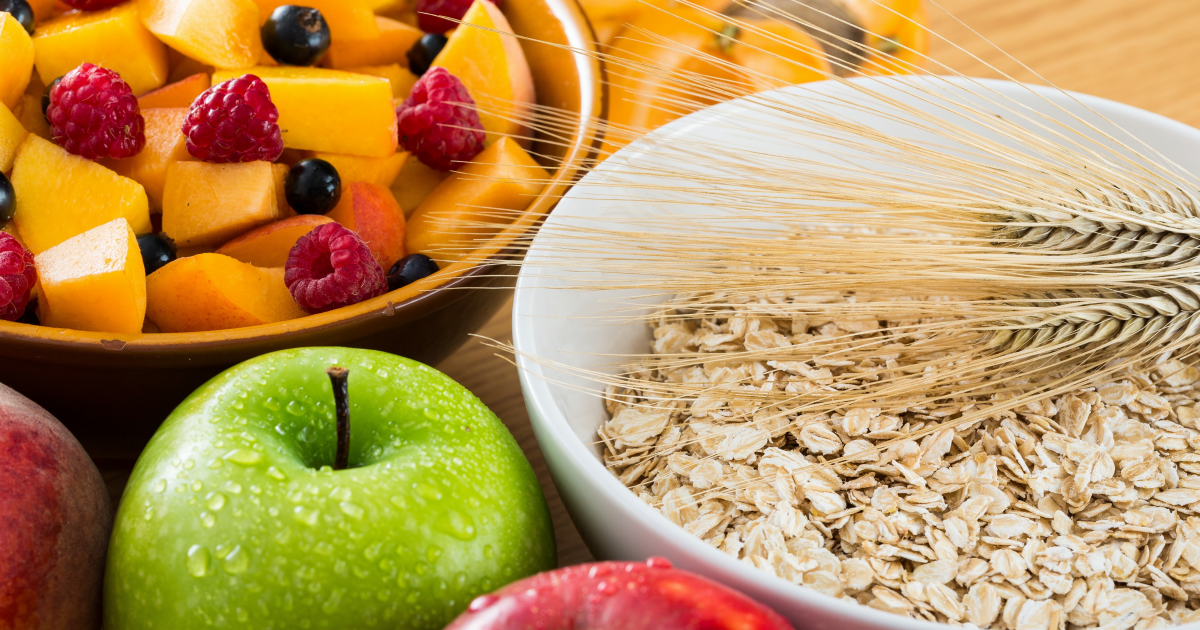こんにちわ。mariinaです。「食物繊維をとりましょう」とよく耳にしますね。摂取すれば便秘が解消される、だから、野菜や特に根菜を食べることを心がけている、という方多いかと思いますが、この食物繊維、実は便秘以外にもいろんな作用があるとして注目されています。そこで、そもそも食物繊維ってなんだ?って疑問も湧いてきますので、欧州食品情報評議会の説明を掲載いたします。
◆「食物繊維」は消化吸収されない物質のこと
英語では”dietary fibre” または繊維質”‘roughage”と呼ばれますが、植物の 食用部分でありながら消化されない、小腸で吸収されないで、そのまま大腸へ送られる物資を指します。この物質に含まれるのは
- 澱粉(でんぷん)ではない多糖類
- セルロース(植物の細胞壁の主成分で,野菜や穀類の外皮に多く含まれる)
- ヘミセルロース (セルロースを構成するグルコースが他の糖で置換された多糖類)
- ガム質 (植物の分泌液や種子に含まれている粘質物)
- ペクチン (果物類に多く含まれ,水分を吸収してゲル化する性質がある)
- リグニン (果物や野菜の茎,穀類の外皮に含まれる木質の繊維)
- その他の植物性の物質 (植物の油脂にあたるワックスやコルクの主成分として知られるスベリン)
など。小腸で吸収されずにそのまま大腸へ送られるという意味での広義の食物繊維は、難消化性澱粉 (豆類や分づき種や穀物、シリアルなどに含まれる) も含みます。
◆食物繊維が多く含まれるもの
果物(特にナシやイチゴ、ブラックベリー、ラズベリー、カシス、オレンジなど)や野菜( 芽キャベツ、, キクイモ、玉ねぎ、にんにく、とうもろこし、さやえんどう、青豆、ブロッコリー)、豆類(レンズ豆、ひよこ豆、そら豆、インゲン豆、大豆)、そして全粒粉(小麦の表皮、胚芽、胚乳をすべて粉にしたもの)、オールブラン(小麦ふすま)、オーツなど。
◆食物繊維には2種類ある
食物繊維には上記の通り、多くの種類がありますが、水に溶けない不溶性食物繊維と水に溶ける水溶性食物繊維に大別できます。食物によってそれぞれが含まれる割合が異なります。水溶性食物繊維の割合が高いのがオーツ、大麦、果物、野菜と豆類です。不溶性食物繊維は全粒粉のパンやシリアルに豊富に含まれています。(水溶性と不溶性で機能が異なりますが、詳しくは別途)
◆食物繊維は体内で発酵し、副産物ができる
小腸で消化吸収されない食物繊維は大腸に運ばれて、腸内細菌のエサとなります。(発酵する)この過程で、短鎖脂肪酸やガスなど、様々な物質ができます。この発酵するということと、その副産物が健康に影響を与えるのです。
◆食物繊維の身体への作用
- 腸の活動を整える
 特に不溶性の食物繊維は便を重くし、大腸を通過する時間を短縮することで便秘予防効果があります。食物繊維の摂取とともに、水分の摂取量も増えると特に効果が発揮されやすくなります。また、食物繊維が腸内細菌によって発酵される際にできる短鎖脂肪酸は、結腸細胞のエネルギー源となり、腸の腫瘍細胞の成長と分裂増加を防ぐ作用も期待されます。食物繊維は腸の活動を整えることによって、憩室性疾患や 痔を防いだり、大腸ガンのリスクを下げるのです。
特に不溶性の食物繊維は便を重くし、大腸を通過する時間を短縮することで便秘予防効果があります。食物繊維の摂取とともに、水分の摂取量も増えると特に効果が発揮されやすくなります。また、食物繊維が腸内細菌によって発酵される際にできる短鎖脂肪酸は、結腸細胞のエネルギー源となり、腸の腫瘍細胞の成長と分裂増加を防ぐ作用も期待されます。食物繊維は腸の活動を整えることによって、憩室性疾患や 痔を防いだり、大腸ガンのリスクを下げるのです。
- 血糖値を引き下げる
水溶性食物繊維は炭水化物の消化吸収の時間を遅くすることによって、食後の血糖値の上昇と、それに対するインスリン反応を穏やかにします。特に糖尿病の方にとって、血糖値のコントロールをしやすくしてくれます。
- 血中コレステロール値を正常化する
最近の研究では、食物繊維が血液中の脂肪にあたるコレステロールに作用することによって冠動脈疾患 (CHD)を防ぐことも示唆されています。 これは幾つもの医学的な試験結果で裏付けられています。ペクチンや小麦ふすま、オーツふすまなどの高粘性の繊維は、総血清コレステロール値と、悪玉コレステロール(LDL)値の両方を引き下げ、さらに、食物繊維の含有量が高い食事を続けることによって、冠動脈疾患 (CHD) を予防するという結果が得られたのです。
- 減量を手助けする
便秘を防ぎ、血糖値や血清コレステロール値を正常化する以外にも、食物繊維の作用で特筆すべきことがあります。食物繊維は食物の量を増やします。消化吸収されないので、摂取カロリーは変わらないのに、満腹感を得やすくなります。減量したいときに摂取したいですね。
このように、食物繊維は、人間の消化酵素では消化されないので、身体の構成成分やエネルギーとなることはありませんが、5つの栄養素に続く第6の栄養素としてその有用性が見直されています。食物繊維を摂るには、果物や野菜、豆や穀物を食べますが、これらは、食物繊維以外にも健康に欠かせない栄養素を豊富に含んでします。意識して食べるようにするのがフィットですね。
original text from EFIC (European Food Information Council)
What is dietary fibre?
Dietary fibre or ‘roughage’ comprises the edible parts of plant that cannot be digested or absorbed in the small intestine and passes into the large intestine intact. This includes non-starch polysaccharides (e.g. cellulose, hemicellulose, gums, pectins), oligosaccharides (e.g. inulin), lignin and associated plant substances (e.g. waxes, suberin). The term dietary fibre also includes a type of starch known as resistant starch (found in pulses, partly-milled seeds and grains, some breakfast cereals) because it resists digestion in the small intestine and reaches unchanged the large intestine.
Sources of dietary fibre
Dietary fibre is found in fruits (pears, strawberries, blackberries, raspberries, currants, oranges), vegetable (brussel sprouts, artichoke, onion, garlic, corn, peas, green beans, broccoli), pulses (lentils, chickpeas, beans) and wholegrains (all bran and oat bran cereals, whole and mixed grain breads).
Types of dietary fibre
Dietary fibre is often categorized according to its solubility into soluble or insoluble. Both types of fibre are found in different proportions in fibre-containing foods. Good sources of soluble fibre are oats, barley, fruit, vegetable and pulses (beans, lentils, chickpeas). Wholegrain cereals and wholemeal bread are rich sources of insoluble fibre.
Dietary fibre and health
Ingested dietary fibre moves along into the large intestine where it is partially or completely fermented by gut bacteria. During the fermentation process several by-products, short chain fatty acids and gases, are formed. It is the combined action of the fermentation process and the by-products formed that contribute the beneficial effects of dietary fibre on health.
The main physiological effects attributed to dietary fibre concern:
• Bowel function
Dietary fibre, particularly insoluble fibre, helps prevent constipation by increasing stool weight and decreasing gut transit time. This effect is enhanced if fibre intake is paralleled by an increase in water intake.
The short chain fatty acids, produced when fibre is fermented by gut bacteria, are an important source of energy for colon cells and might inhibit growth and proliferation of gut tumour cells.
By improving bowel function, dietary fibre can reduce the risk of diseases and disorders such as diverticular disease or haemorrhoids, and may also have a protective effect on colon cancer.
• Blood glucose levels
Soluble fibre, may slow digestion and absorption of carbohydrates and hence lower the rise in blood glucose that follows a meal (postprandial) and insulin response. This can help people with diabetes improve control their blood glucose levels.
• Blood cholesterol
Results of epidemiological studies identify another role for dietary fibre in the prevention of coronary heart disease (CHD) that of improving blood lipid profiles. Clinical trials confirm the results of these epidemiological studies. Isolated viscous fibres such as pectin, rice bran or oat bran lower both total serum cholesterol and low density lipoprotein (LDL or bad) cholesterol levels. At the same time, research continues to show that diets high in a mix of dietary fibre also protect against CHD.
• Other
While prevention of constipation, improved blood glucose levels, and blood lipid profiles predominate as beneficial outcomes of a diet high in dietary fibre, other benefits are worth noting. For example, because fibre provides bulk in the diet, without added calories, it can have a satiating effect on appetite; helping in weight management.
In order to have all the benefits of fibre it is important to vary the sources of fibre in the diet. Diets with fruits, vegetables, lentils/beans and wholegrains not only provide dietary fibre but as well many other nutrients and food components essential to good health.



No Comments